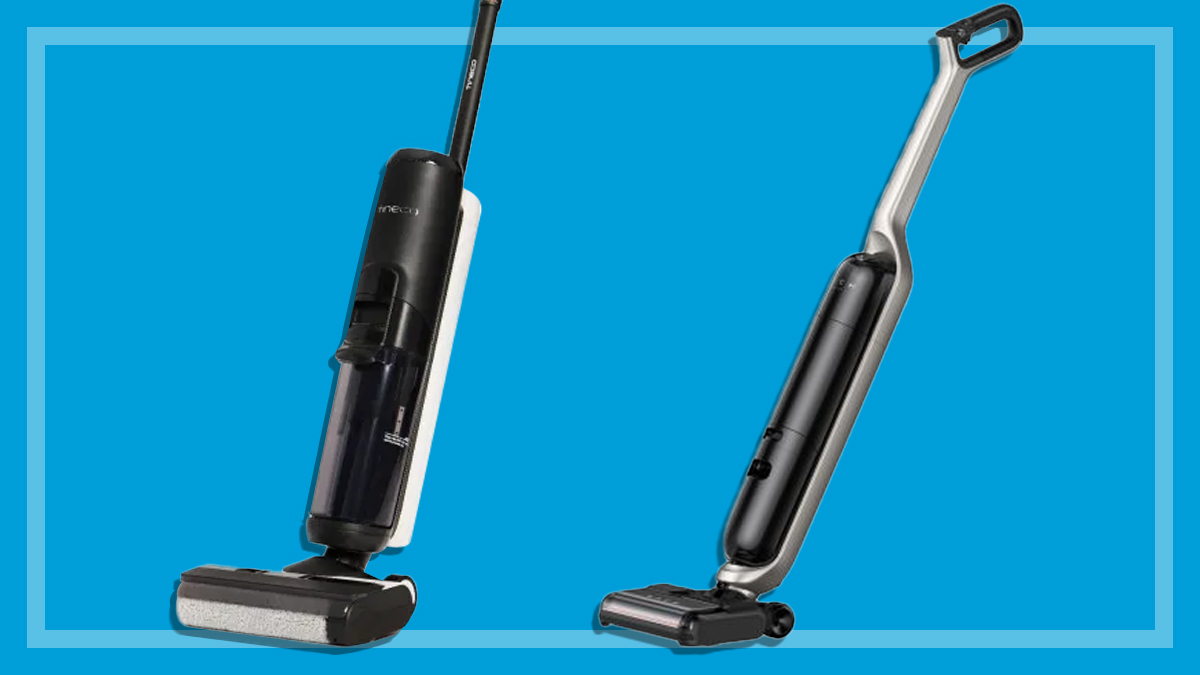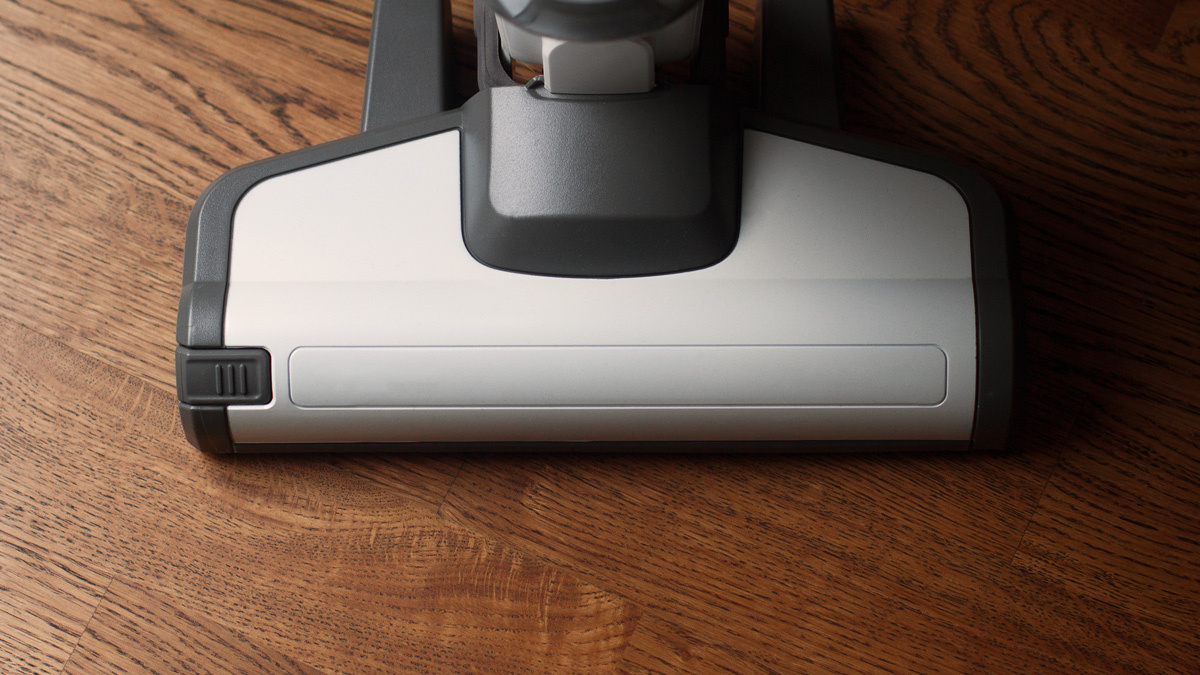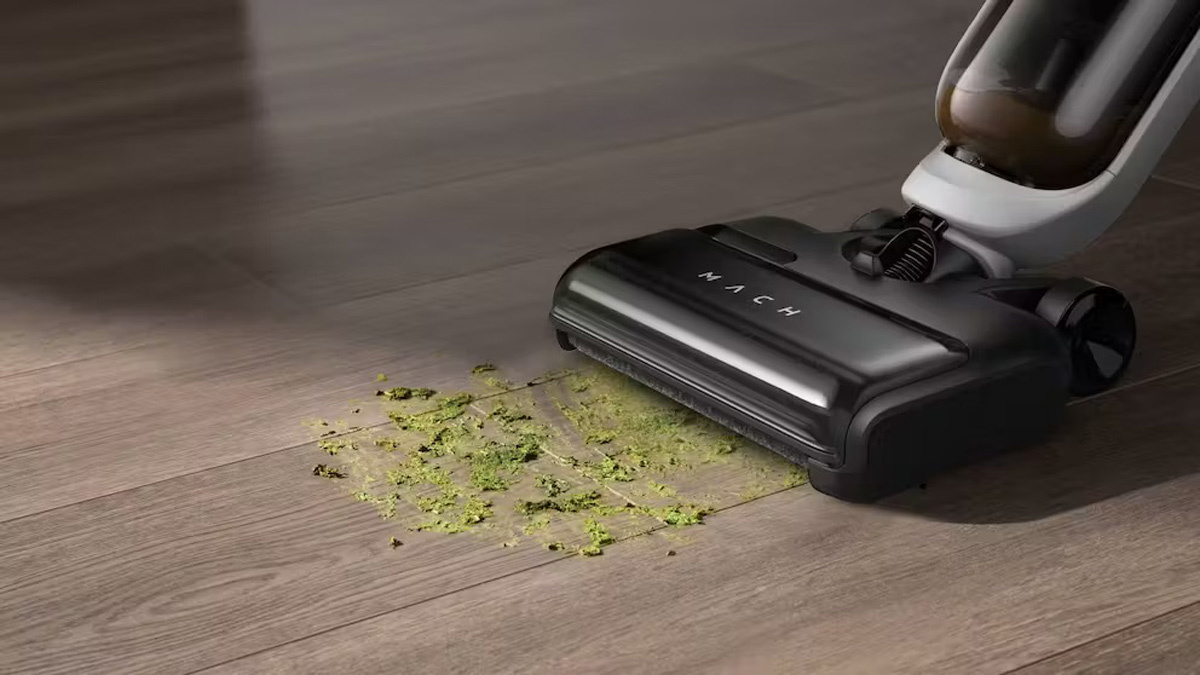Get our independent lab tests, expert reviews and honest advice.
First look: Dyson WashG1 hard floor cleaner
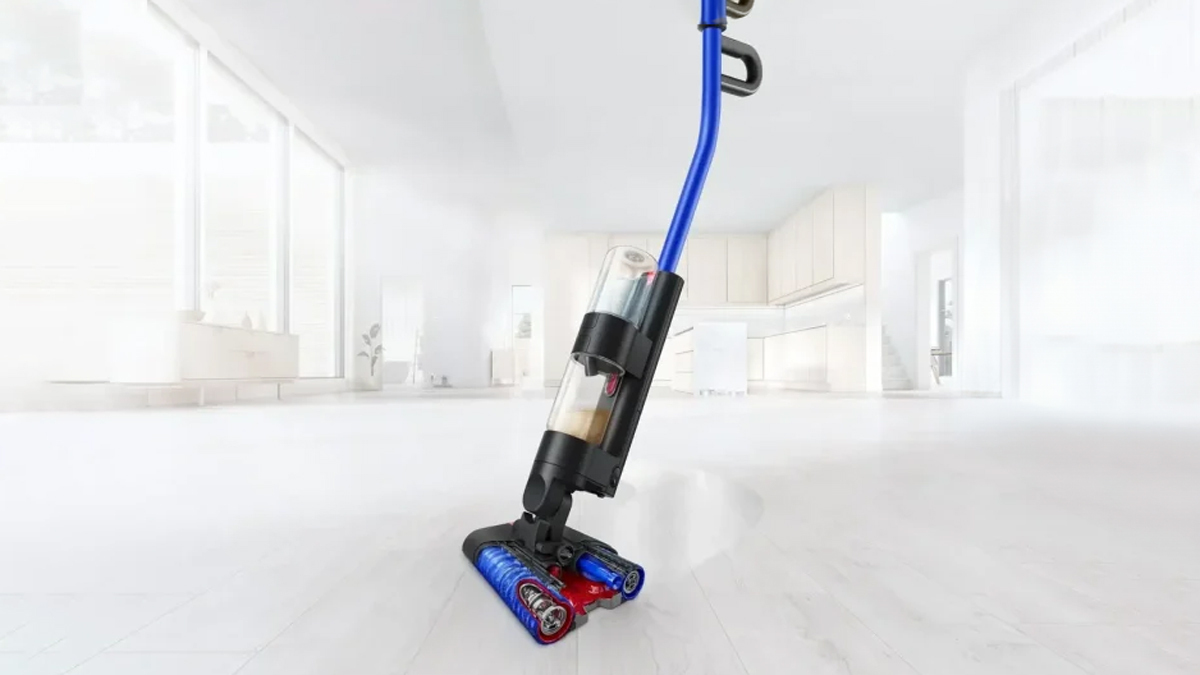
CHOICE verdict
The Dyson WashG1 uses only tap water and microfibre rollers to wash dirt and debris from your floors – there’s no vacuum suction involved. First impressions suggest it’s good at removing fresh stains like mud and light bits of fluff, dust and hair that have accumulated on your floors, but stubborn dried-on stains like bird poo and food remnants require a lot of effort and water to remove and are best suited to good old elbow grease. The rollers are self-cleaning and any dirty water can be easily poured down a sink, but the separated solid debris that is collected in a tray has a messy disposal process.
Price: $999
Contact:
dyson.com.auOn this page:
- How does the Dyson WashG1 work?
- Features and general impressions
- How easy is the WashG1 to use?
- How well does it clean?
- Ongoing maintenance
Dyson is known for its signature stick vacuums, but the new WashG1 is its first dedicated hard floor cleaner, using only tap water and rotating microfibre rollers to wash away dirt and debris.
The machine works similarly to the wet floor cleaning attachment supplied with the Dyson V15s Detect Submarine stick vacuum in that there is no suction involved, but instead you have an entire machine dedicated to the task.
But is $999 worth it for a job you could do with a traditional broom, mop and bucket?
For this first look we used a review model from Dyson to see how it fared on a number of floor surfaces with varying degrees of stains, including dried-on food, bird poo, mud, jam, hair and general dust build-up.

How does the Dyson WashG1 work?
The Dyson WashG1 is cord-free and works off a rechargeable battery. It has two microfibre rollers that sit under the unit and clean water from a 1L tank is pumped to the rollers at either low, medium, high or max modes in order to wet the floor. The dirty water is extracted into a separate 800mL water tank, so unlike an old mop and bucket you aren’t reusing dirty water to continue cleaning.
Any solid matter like crumbs, fluff or sand is removed from the rollers and separated into a debris tray using internal brush bars. Long strands of hair can still get caught around these brush bars and will have to be removed as part of ongoing maintenance.
Features and general impressions
Handle
Upon first use, the handle clicks into the main body of the machine and is not designed to be removed again, unless repacking. You push it along in much the same way as a traditional upright vacuum cleaner or other hard floor cleaner.
Water tanks
The WashG1 has two clear tanks that click into a “collar” that attaches to its main body. One tank is for clean tap water (1L), the other is for the extracted dirty water (800mL). This is far more than the Submarine attachment, which only has a 300mL capacity.
The machine is primarily designed to be used with cold or lukewarm water so I didn’t use it with detergent for this review. However, if you must, Dyson does say you can use “gentle, low-foaming common household detergents” and no more than one tablespoon per litre of water (no bleach).
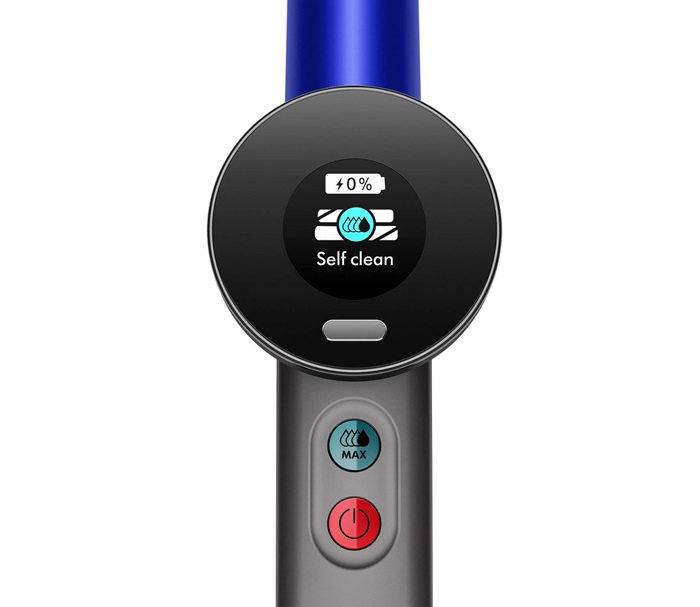
Rollers
The two absorbent microfibre rollers are large and sit across the entire width of the head, and they counter-rotate while in use. If you remove the rollers for cleaning, you’ll see an internal brush bar that helps to remove solid matter from the rollers.
LCD display
You can control the settings via the LCD display at the top of the handle. The display also shows the remaining runtime and lets you choose the appropriate hydration level for cleaning.
Battery
Dyson claims the WashG1 will operate without charge for 35 minutes, but in reality this varies a lot depending on the level of power you’re using. You’ll likely need to empty and refill the water tanks a lot sooner. The display shows how much runtime you have left, which definitely counts down faster on higher modes. It continues charging when in its dock.
Dyson recommends buying a second battery if you want extra runtime, but at $199 it’s a huge investment and should only be a last resort or when the battery life eventually lessens, as the machine seems to charge quite quickly.
Debris tray
This should be removed and cleaned after every use of the WashG1 as it retains all of the solid, non-dissolvable gunk that is extracted from your floors.
Self-clean mode
Once in the dock and with a tank of clean water, you can select a self-cleaning cycle, which runs for 140 seconds and proceeds to wash the rollers.
Noise
It’s noisy, but those who tried out the WashG1 didn’t consider it to be as annoying or high-pitched as some vacuums.
How easy is the WashG1 to use?
After showing the unit to a few people in the CHOICE labs, their first reaction upon lifting it was that there was some weight to it. But when it’s turned on and in use, it’s surprisingly easy to glide around all kinds of hard floors.
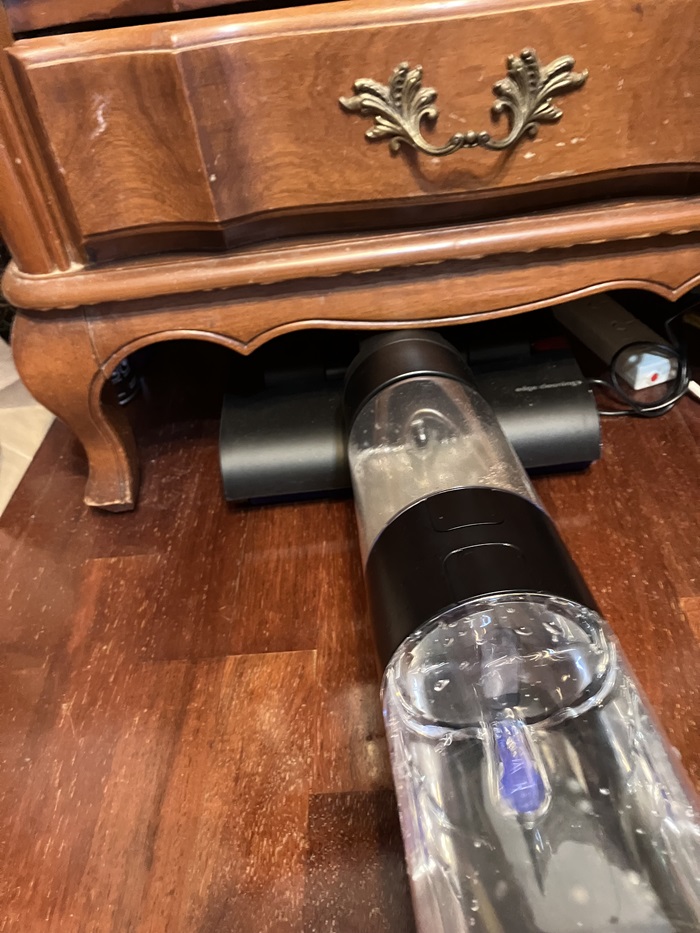
The problem is once you go up and down stairs or want to move it over rugs or across carpeted rooms, you’ll need to carry it (and be careful of any water from underneath dripping onto these surfaces).
Gliding along kitchen kickboards and manoeuvring under tables and chairs is easy.
But the WashG1 can’t reach under low furniture like you can with the wand and head of a traditional stick vacuum or mop, and runs into the same design issues we find with upright vacuums that have their hefty canisters on the main body of the unit.
The controls are accessible from the main handle, with water droplet symbols showing which level of water you want deposited on the floor.
A low mode will mean the battery and the water will last longer; this mode is also designed for everyday use and delicate floors. A max mode is also available for stubborn spot cleaning but when I used it, the tank of water only lasted for 90 seconds before needing to be emptied.
| Check Dyson |
| Check The Good Guys |
| Check Bing Lee |
| Check Betta |
| Check Amazon |
How well does it clean?
I tried the WashG1 on a range of areas in varying states of dirtiness, including matte and shiny tiled surfaces, floorboards, and vinyl floors.
It was easy to clean off fresh stains like mud and light bits of fluff, crumbs, dust and hair. The blackness of the dirty water tank, even on floors people thought were relatively clean, proves that the machine is picking up dirt.
However, where it struggled was on established stains. Most dried-on bits like bird poo and stuck-on food remnants require a lot of effort and water to remove, even when using the maximum settings, which is disappointing for a $999 machine.
This may be because you can’t use piping hot water in the machine like you can with a steam mop or traditional mop, which can help loosen tough stains.
It was easy to clean off fresh stains like mud and light bits of fluff, crumbs, dust and hair, but where it struggled was on established stains
Dyson says that you won’t need to vacuum or sweep your floors before use because this debris gets separated, but the tray is quite small and there’s no indication about whether it’s full.
I have several pet birds who drop the odd bird poo outside the cage and leave seeds and pellets scattered everywhere. I still needed to use a broom to sweep the skirting boards and corners after cleaning, as the WashG1 wasn’t able to gather everything and was pushing many pellets to the side.
Despite setting to maximum and doing many passes, I was unable to loosen the dried-on droppings like I could with a hot mop or steam mop, but it worked on “fresh” ones.
Some dried-on jam was also tough to remove (although this is traditionally a difficult stain for all the hard floor cleaners we’ve tested) and we had to crank up the settings to max.
Ongoing maintenance
Hard floor cleaners pick up both solid and liquid debris and there is some ongoing maintenance involved with keeping the tanks, rollers and associated filters clean, which can be quite tedious and messy.
Thankfully, the automatic self-cleaning mode saves you from always having to clean the rollers manually (in comparison, this is necessary with the Dyson Submarine wet floor attachment).
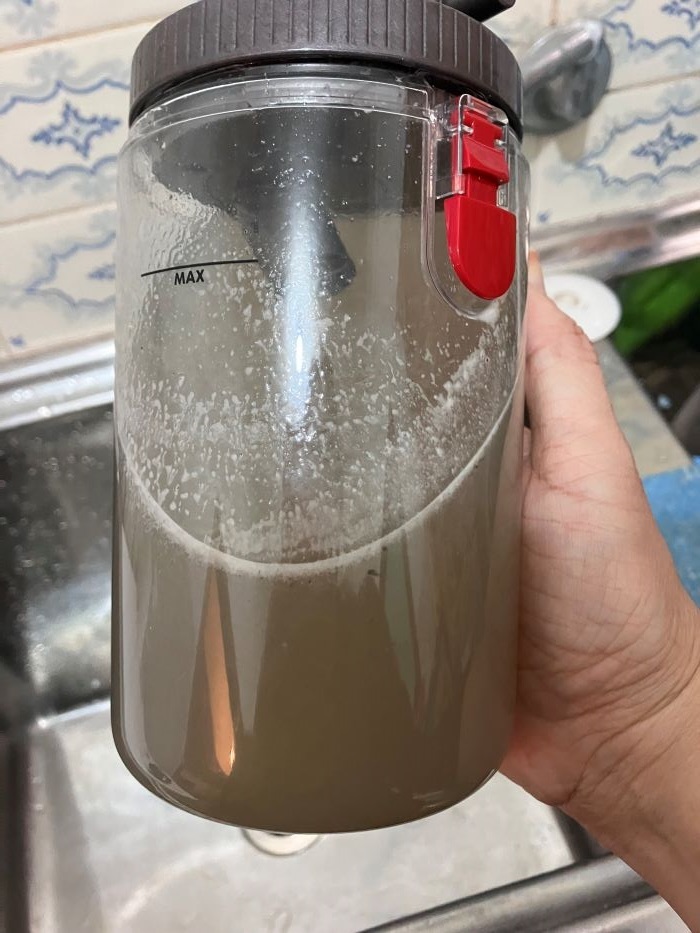
Because the dirty water tank doesn’t have solid debris in it, it can be easily poured down a sink by unscrewing the jar-like lid (which also houses the float assembly). However, any solid debris still ends up in a small tray that you’ll need to clean out after every use.
Dyson says it’s a matter of emptying the debris tray straight into a bin but in practice, the combination of water and solids matter makes it very hard to tap or shake this into a bin. Seeds, sand, hair and fluff were hard to shake loose.
Some wiping or scraping of the debris was still necessary (and can get your hands dirty), and you’ll then need to rinse the tray under a sink. I noticed that some detergent-like froth was visible on the debris tray even though I didn’t use detergent, but this was probably residue from previous cleans.
Despite Dyson’s claim that WashG1 owners can do away with pre-sweeping or vacuuming, if there’s a lot of loose, dry debris on your floor, a quick once-over with the broom would lead to less gunk in the tray to clean out.
And although the self-cleaning mode will rinse out the microfibre rollers, you’ll still need to pull them out every so often to cut off any hair that may have become wrapped around the internal brush bars.
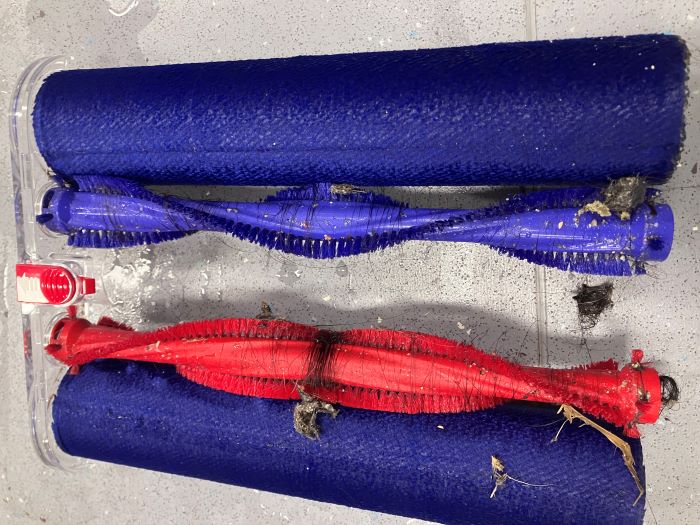
This is a common task for many floor cleaners (including vacuums) but can be a messy process as water can drip out of the rollers. It should be a task that’s done away from your freshly washed floors.
The rollers can also be manually washed with detergent under a tap and squeezed by hand for a more thorough clean, and eventually they’ll need to be replaced.
Dyson says they should be replaced every 25 hours, and replacement rollers will cost $49 per set. You’ll also need to clean the water tanks, float assembly and dock tray regularly.
The charging dock conveniently houses the machine but it’s worth noting that the rollers aren’t exposed to air here and remain wet at all times unless you’re manually washing them and leaving them out to dry.
We’ll give the machine a full run through our existing hard floor cleaner test method to see how it compares with the Dyson V15s Detect Submarine hard floor attachment as well as the other cleaners we’ve tested.

